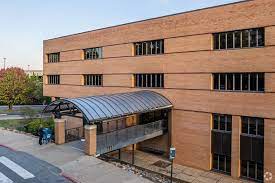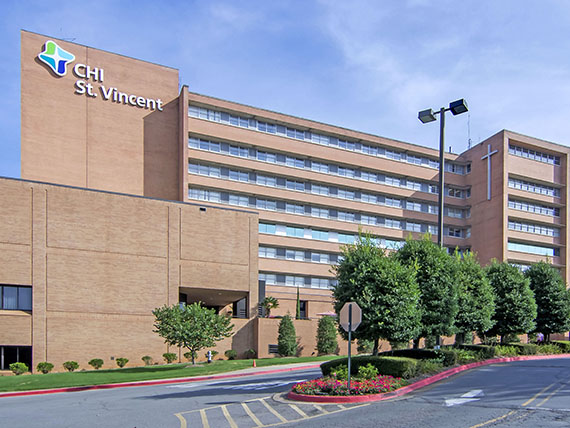CHI St. Vincent Infirmary
Hospital
General Hours:
- General Hours:
- Sun Open 24hrs
- Mon Open 24hrs
- Tue Open 24hrs
- Wed Open 24hrs
- Thu Open 24hrs
- Fri Open 24hrs
- Sat Open 24hrs
Emergency Room Hours:
- Emergency Room Hours:
- Sun Open 24hrs
- Mon Open 24hrs
- Tue Open 24hrs
- Wed Open 24hrs
- Thu Open 24hrs
- Fri Open 24hrs
- Sat Open 24hrs
Diagnostic Imaging Center Hours:
- Diagnostic Imaging Center Hours:
- Sun Closed
- Mon 08:00 AM - 04:30 PM
- Tue 08:00 AM - 04:30 PM
- Wed 08:00 AM - 04:30 PM
- Thu 08:00 AM - 04:30 PM
- Fri 08:00 AM - 04:30 PM
- Sat Closed
About this location
Services at this location

Primary Care
General Hours:
- General Hours:
- Sun Closed
- Mon 08:00 AM - 04:30 PM
- Tue 08:00 AM - 04:30 PM
- Wed 08:00 AM - 04:30 PM
- Thu 08:00 AM - 04:30 PM
- Fri 08:00 AM - 04:30 PM
- Sat Closed
Emergency Room
Emergency Room Hours:
- Emergency Room Hours:
- Sun Open 24hrs
- Mon Open 24hrs
- Tue Open 24hrs
- Wed Open 24hrs
- Thu Open 24hrs
- Fri Open 24hrs
- Sat Open 24hrs
Diagnostic Imaging Center
Diagnostic Imaging Center Hours:
- Diagnostic Imaging Center Hours:
- Sun Closed
- Mon 08:00 AM - 04:30 PM
- Tue 08:00 AM - 04:30 PM
- Wed 08:00 AM - 04:30 PM
- Thu 08:00 AM - 04:30 PM
- Fri 08:00 AM - 04:30 PM
- Sat Closed
Patients and visitors
Thank you for choosing CHI St. Vincent Infirmary for your care. Our dedicated team of physicians, nurses and staff is committed to your health, well-being and satisfaction—providing compassionate care that extends beyond medicine. We strive to heal the body, mind and spirit in a welcoming and supportive environment. Our friendly staff is always here to assist you, whether you have questions about your rights as a patient, visiting hours, medical records and more.
Billing and insurance
We understand that everyone's path to health and wellness is unique. From getting estimates and financial assistance to paying your bills, we're here to make it easier for you and help you navigate this process with confidence.
More billing and finance information
Estimate costsopens in a new tab
Insurance accepted
The insurance carriers and plans shown is for references purposes only and is subject to change. It is recommended that you check with your health plan directly to confirm that this location is included.
Frequently asked questions
Before your visit
Patients may have up to two visitors at a time. One visitor is allowed to stay overnight, except in the ICU. Special requests will be reviewed on a case-by-case basis.
We take extra care to keep your health information safe. Request your medical records by mail, in person or online.
Managing your health between visits has never been easier with My OneCareopens in a new tab. Sign in to access our secure portal or call (888) 670-9775 to get started.
Free self-parking is available in our parking garage, with complimentary shuttle service to the main entrance. Valet parking is also available for a fee.
Awards and recognition





Notice: "Find a Location is provided" by CommonSpirit Health as a convenience to you. The information on each participating location is submitted to CommonSpirit Health by each location and is not independently verified by CommonSpirit Health. Each location is solely responsible for the completeness and accuracy of the information listed about them. CommonSpirit Health is not responsible for any loss or damages caused by your reliance on the location information contained on Find a Location. You should telephone the location's office in advance to verify the accuracy of the information.

